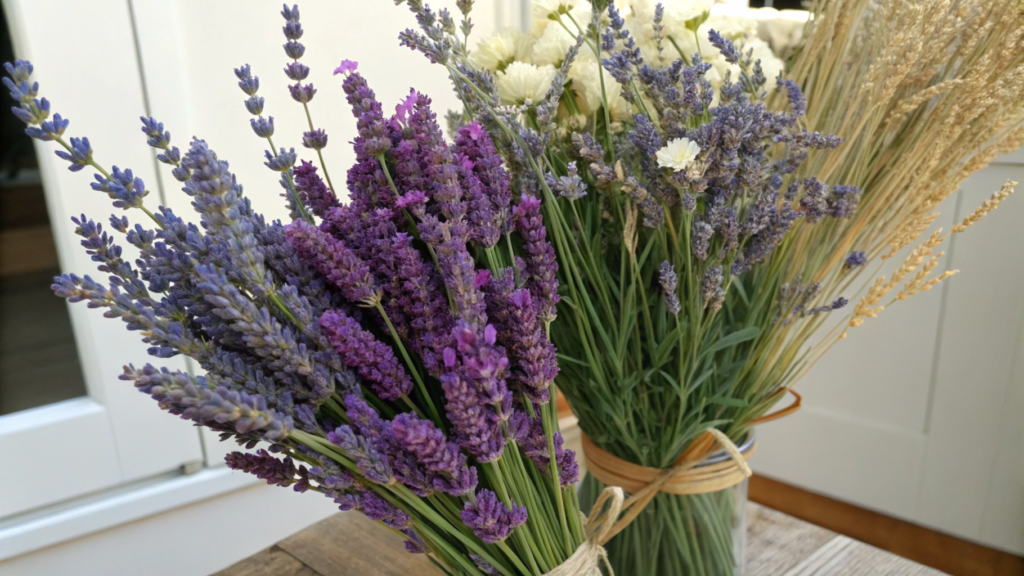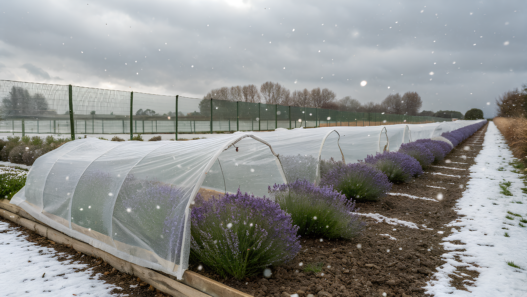Lavender, especially English lavender, is known for its hardiness. But it cannot be called invulnerable, because during the winter frosts can cause serious damage to the plant. The eternal companions of winter – cold, excessive moisture and frost are a serious threat to all crops, damaging their roots and foliage. But you can cope with all the difficulties if you know the rules of winter care for lavender plants. Following these rules will help your plants survive the cold weather and stay healthy and ready to bloom in spring.
In this material we will break down the basics of lavender plant care winter, step by step and with specific recommendations.
The story from my plot
I, like many beginners, made an unacceptable mistake. A couple of winters ago, I planted French lavender directly into the ground, without any preparation. As a result, in spring it looked like a fragile skeleton instead of a lush bush.
I was very upset, but the lesson has been learned: winter care of lavender plants is a necessity, not an option. Now I strictly follow all the rules of care and my lavender is blooming like never before.
Step 1. Choose the type of lavender

Not all lavender is equally cold tolerant. Here are the main species:
English lavender. Withstands frosts up to USDA zone 5, suitable for cold climates.
French and Spanish lavender. More sensitive to cold, suitable for zones 8 and above.
If you live in colder regions and want to grow frost-tolerant species, you’ll need additional lavender plant care for winter.
Tip. Not sure what kind of lavender you have? Check the information on the label or consult your local nursery. This will help you avoid mistakes.
Step 2. Prepare the plant
Just before winter arrives, give the plant a light pruning. Remove wilted flowers and weak, elongated stems. This will greatly reduce the risk of disease and also help the plant conserve vigor. But be careful not to cut off the woody part of the stems, as this can harm regeneration.
Why it’s important. Pruning reduces the risk of frost damage and makes it easier for the plant to overwinter.
Step 3. Mulching
If your lavender is growing in the ground, it is advisable to add a layer of mulch around the base of the plant. Straw, tree bark or dry leaves will work well as mulch. The mulch insulates the roots well from the cold, and be sure to leave a small gap at the stem to avoid rotting.
Scientific Fact. Studies show that mulching reduces temperature fluctuations at the roots, protecting the plant from winter stress (source).
Step 4. Transfer the lavender to a shelter

Make sure that the pot in which the lavender is growing has good drainage, because it does not tolerate stagnant water. It is better to move the lavender to a sheltered place: garage, greenhouse or put it on a sunny window in the house.
My own personal lifehack on how to take care of lavender plant in winter. I place the plant by a south-facing window and use a tray of pebbles to create and maintain a dry atmosphere similar to a Mediterranean climate.
Step 5. Watering
As with many plants, overwatering is one of the main threats to lavender in winter. During this period, the plant goes into a dormant state and requires minimal water. In this case, it is recommended to water only when the soil is completely dry. And even then very, very moderately.
Remember. Lavender likes dry conditions, and excess moisture can lead to the most common problem in winter, namely root rot.
Step 6. Protect your lavender

To protect lavender growing outdoors, use burlap or a special plant shelter. This is a good defense against strong winds and snow. All these natural phenomena can cause great damage to the foliage and stems. Fasten the shelter in such a way that there is always air access.
Personal experience. Once I forgot to take care of the shelter in time and left my lavender unprotected. I was very sorry, but the heavy snow completely broke it. Now I always cover the plants before the first snow.
From all of the above, we can conclude that proper lavender plant care for winter will give us healthy plants in the spring.
As soon as the frosts have passed and the weather is more or less warm, remove the winter shelters and feed the plant with organic fertilizer. This will help it recover and fully prepare for the new season.
Recommended products for lavender winter care
- Mulch. Organic straw mulch
- Frost Cloth. A heat-protective covering for plants
- Humidity Tray for Indoor Lavender. A tray with pebbles for plants
A word of advice
I think you have seen that there is nothing difficult or impossible in the winter care of lavender plants. In any case, your efforts will be rewarded. Don’t ignore the tips and recommendations, follow them step by step and you will ensure your lavender will be healthy and beautiful for many years to come.
What are your winter lavender care secrets?
Share them in the comments. I’ll be happy to read them.











